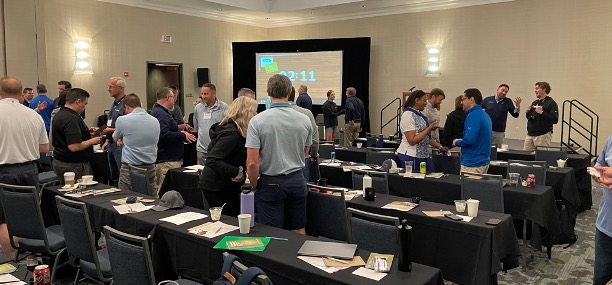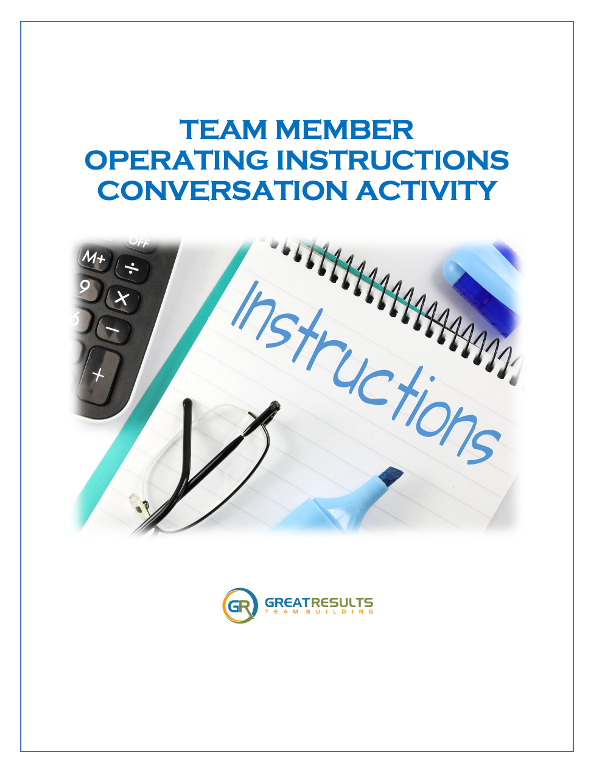As a leader, you have probably found that traditional command and control approaches are gradually being replaced by more collaborative, inclusive, and productive methods.
A more effective approach is involving your people in clarifying your culture and standards.
Effective leaders acknowledge that teams are composed of diverse individuals with unique perspectives. By empowering team members to actively participate in crafting their own guidelines, co-creation cultivates a sense of ownership, accountability, and teamwork.
This is a short guide for co-creating team agreements to help smart team leaders facilitate a collaborative conversation that establishes clarity and commitment around how your people will interact.
The Unproductive Approach: Command and Control
Historically, managers would set forth a rigid set of rules and standards that teams were obligated to follow. These rules were often presented during meetings and prominently displayed on team members’ desks.
While this method may yield compliance in some cases, it often leads to team members being perceived as rule-breakers, which can hinder overall team success. It’s time to explore a more effective and collaborative way of establishing team agreements.
The Effective Approach: Involve and Empower Your Team
Co-creation involves inviting team members to actively contribute their insights and perspectives to address team-related issues and challenges.

When team members’ input is valued and incorporated into the development of solutions, they are more likely to embrace and take ownership of the resulting agreements. This approach places a premium on inclusivity and teamwork, creating an environment where every team member feels heard and valued.
Investing time in team agreements is a strategic decision that can yield significant benefits for leaders and their teams. Firstly, it fosters increased ownership and accountability among team members, as they collectively define their roles, responsibilities, and expectations.
This shared clarity empowers individuals to take ownership of their tasks, leading to greater accountability and overall team cohesion. Additionally, team agreements reduce misunderstandings and conflicts by establishing clear communication channels and resolving potential conflicts proactively – and they enhance alignment within the team, ensuring that everyone is working toward a common goal.
Furthermore, these agreements facilitate ongoing improvement through regular review and adaptation, allowing teams to stay agile and responsive to changing circumstances.
Team agreements also serve as a source of inspiration for other departments, encouraging them to create their own agreements and thereby fostering a culture of collaboration and accountability throughout the organization.
An investment in team agreements is a key driver of both team and organizational success.

How Effective Leaders Build a Meaningful Team Agreement
As a team leader, it’s vital to collaborate closely with your team and their respective managers to facilitate the co-creation of a team agreement – a document that will clarify expectations and standards.
It’s essential to acknowledge that each team member, team, and manager brings their unique personality, perspective, and work preferences to the table.
Initiate the process by introducing the concept of a “team agreement” to all team members to ensure that everyone comprehends its purpose and the benefits it can bring to the team.
How to Facilitate Your Team Agreement Meeting Session
Creating a team agreement is not always simple, as teams comprise individuals with diverse opinions and needs. Begin by identifying areas where team members already concur.
For instance, focus on core team working hours or acknowledging the importance of fostering better interpersonal relationships within the team.
Teams can also employ practices like Teammate Operating Instructions to gain a deeper understanding of each other’s values and perspectives.
To facilitate the co-creation of a team agreement, follow these steps:
1 – Before the Session:
Introduce the concept of a team agreement to all participants.
Identify the facilitator and intention for the session outcomes.
2 – During the Session:
Begin with a connection or focus activity to foster a positive atmosphere.
Introduce an issue that your team needs more clarity on to be more productive:
– when are we “off the clock” and not responsible for replying to email?
– what platform will we use for what communication needs?
– how quickly will we respond to emails, texts, or messages?
– how often will we meet and where?
– how will we communicate and contribute asynchronously?
– how will we deal with issues such as lateness or missed deadlines?
– how will we define progress and success as a group?
– how will we make decisions together?
– how will we ask for help if we need it?
Conduct individual brainstorming to collect input from all team members.
(ask them to write down ideas on an index card, then share their responses)
Have each team member present their responses.
Pose questions aimed at deepening understanding and clarifying perspectives.
Consolidate and categorize the responses into key themes and guidelines.
Review and dign the agreement as a symbol of commitment.
3 – After the Session:
Visually display the team agreement in a prominent location.
Refer back to the agreement whenever misunderstandings arise.
When new team members join, share the agreement and get their feedback.
Collaboratively agree on any necessary updates to the agreement.

Effective leaders can transform their workplace culture by involving their entire team in the creation of team agreements. This process begins with acknowledging past issues and undesirable behaviors, learning from them much like we learn from parenting mistakes.
You completed team agreement should include the following:
– A set of clear guidelines governing team collaboration and communication.
– Conversations that include active contributions by the entire team.
– Agreement on what the team collectively endorses ideas and standards
– Invitation to discuss any disagreements in a respectful way to achieve consensus.
– Written commitments that define communication and collaboration protocols.
– Clear steps for periodic revisions and updating as the team learns and evolves.
– A visual representation of the principles for mutual accountability.
.
It is important to remember that the discussions and interpersonal dynamics that emerge during this process can be more crucial than the guidelines themselves. Team members should be encouraged to contribute their thoughts, and consensus should be sought to identify overlapping behaviors.
The final list should have a target of 5-7 guidelines emphasizing positive behaviors.
Individual commitment to these guidelines is essential for accountability, with regular self-assessment enabling continuous improvement. It’s important to recognize that respectful disagreement is a sign of a healthy team, and these guidelines should be revisited when the team undergoes changes to ensure ongoing relevance and effectiveness.
Co-creating team agreements empowers teams to take ownership of their working guidelines, leading to improved collaboration, reduced conflicts, and increased alignment.
As a leader, embracing co-creation can enhance team dynamics and performance, fostering shared ownership and accountability, ultimately creating a more positive and profitable workplace culture.
– – – – –
Sean Glaze is an author and leadership expert who has worked with clients like Cisco, John Deere, Coca-Cola, and Emory University to increase collaboration, boost productivity, and build exceptional workplace cultures.

As a successful basketball coach and educator for over 20 years, Sean gained valuable insights into leading winning teams – and now he travels around the country to share those lessons…
Sean’s engaging conference keynotes and interactive team building events help accelerate the growth of more effective leaders.
And Sean’s books, Rapid Teamwork, The 10 Commandments of Winning Teammates, and Staying Coachable are entertaining parables with powerful take-aways to improve team performance and leadership!

Use Connection Chats to Engineer Better Collaboration Across Every Division on Your Team

Effective Leaders Build Trust and Teamwork by Focusing on Leadership Development

The Power of a Sticky Culture in Boosting Organizational Performance and Retention

Are Your Team Standards Seen as Suggestions or Recognized as Requirements?
Books and Resources for Leaders
Check other blog
Use Connection Chats to Engineer Better Collaboration Across Every Division on Your Team
Effective Leaders Build Trust and Teamwork by Focusing on Leadership Development
The Power of a Sticky Culture in Boosting Organizational Performance and Retention
Contact Sean

Connect with Sean

Tell Sean About
Your Event
Tell Sean About
Your Event
"*" indicates required fields












